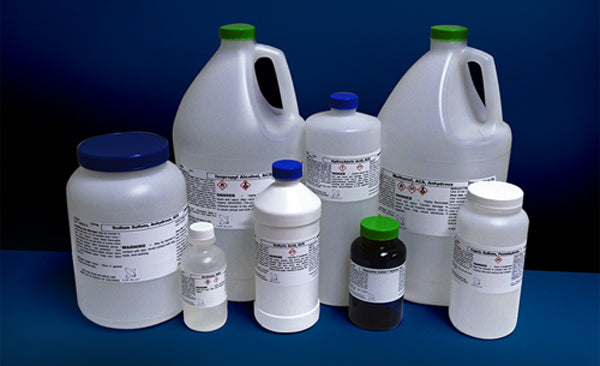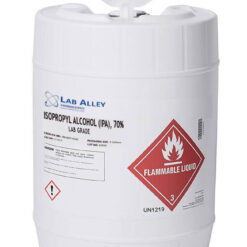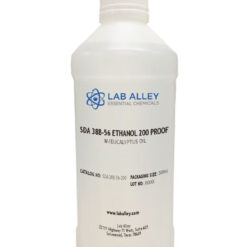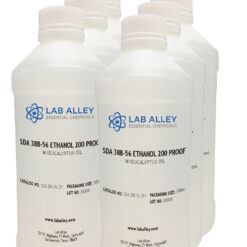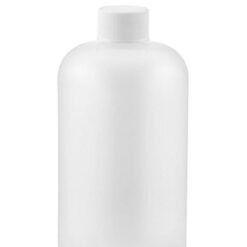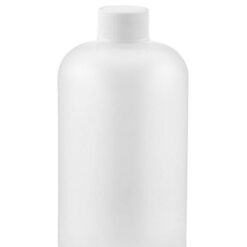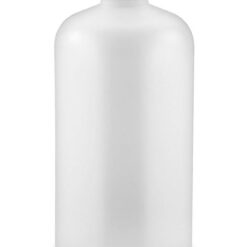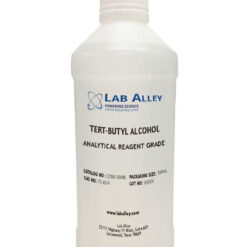Nitric Acid 50% Analytical Grade Reagent
$128.00 – $443.00
Nitric Acid 50% | Analytical Reagent (AR) Grade For Labs | 50% HNO3 Aqueous Solution In Water | Formula HNO₃ | CAS # 7697-37-2 | Aqua Fortis | Corrosive Mineral Acid | Transparent/ Colorless | Oxidizer For Gold Recovery, Etching, Cleaning, Testing Jewelry
Nitric Acid 50% AR Shipping Information:
DOT: Nitric acid, solution, 8, UN2031, PG II
Please contact us to request a Safety Data Sheet (SDS) and Certificate of Analysis (COA) for Nitric Acid 50% AR.
Information On Nitric Acid From Wikipedia
Nitric acid, also known as aqua fortis and spirit of niter, is a highly corrosive mineral acid. The pure compound is colorless, but older samples tend to acquire a yellow cast due to decomposition into oxides of nitrogen and water. Most commercially available nitric acid has a concentration of 68% in water.
- Nitric Acid Formula: HNO3
- IUPAC ID: Nitric acid
- Molar mass: 63.01 g/mol
- Density: 1.51 g/cm³
- Boiling point: 181.4°F (83°C)
- Melting point: -43.6°F (-42°C)
- Use Nitric Acid For Gold Recovery And Gold Refining
- Nitric Acid CAS Registry Number: 7697-37-2
- Nitric Acid PubChem CID: 944
Information On Nitric Acid From PubChem
Nitric acid, red fuming appears as a pale yellow to reddish brown liquid generating red-brown fumes and having a suffocating odor. Very toxic by inhalation. Corrosive to metals or tissue. Prolonged exposure to low concentrations or short term exposure to high concentrations may result in adverse health effects. Rate of onset: Immediate Persistence: Hours – days Odor threshold: ~1 ppm Source/use/other hazard: Used in many industries; Very corrosive to skin/mucous membranes as well as metals & other materials.
Nitric acid is a nitrogen oxoacid of formula HNO3 in which the nitrogen atom is bonded to a hydroxy group and by equivalent bonds to the remaining two oxygen atoms. It has a role as a protic solvent and a reagent. It is a conjugate acid of a nitrate.
Nitric acid (HNO3). A colorless liquid that is used in the manufacture of inorganic and organic nitrates and nitro compounds for fertilizers, dye intermediates, explosives, and many different organic chemicals. Continued exposure to vapor may cause chronic bronchitis; chemical pneumonitis may occur.
Nitric Acid Safety And Hazards Information From PubChem
Nitric Acid is TOXIC; inhalation, ingestion or contact (skin, eyes) with vapors, dusts or substance may cause severe injury, burns or death. Reaction with water or moist air may release toxic, corrosive or flammable gases. Reaction with water may generate much heat that will increase the concentration of fumes in the air. Fire will produce irritating, corrosive and/or toxic gases. Runoff from fire control or dilution water may be corrosive and/or toxic and cause pollution.
| Weight | 1361 lbs |
|---|---|
| Model | 500ml, 6 x 500ml Case, 2.5 Liters, 4 x 2.5 Liters Case |

